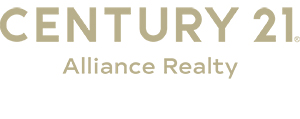In this article:
No two home buyers are alike, so the best loan program for one buyer is likely unsuitable — or plain unavailable — to another. It’s up to the buyer and his or her lending adviser to make the right call based on these and other questions:
- Which loan has the lowest monthly payment?
- What option requires the least amount upfront?
- What will cost me less over time?
- Which loan type is suitable for my credit score?
- How does my income affect the products for which I’m eligible?
There is no “right” answer to the question, “Which loan type is best?”
In fact, the best answer is, “it depends.”
That’s why today’s home buyer is fortunate enough to have access to multiple programs. There are no “bad” mortgage programs, just ones that do and do not fit your situation. Below, you can get started figuring out which loan program might be your best option. At the end of the day, you want something that will help you buy a house affordably. How you get there is secondary.
Conventional loan
Conventional loans are the go-to choice for many home buyers today. They offer great rates, many down payment options, and flexible terms.
Many conventional loans are often known as “conforming loans” because they conform to standards set by Fannie/Freddie. All that means for you, though, is that most lenders across the country offer these loans. Banks, credit unions, and mortgage companies in nearly every U.S. city are able to offer these loans, which offer the following advantages:
- Down payments as low as 3%
- No upfront or monthly mortgage insurance with a down payment of 20% or more
- Available for the home you’ll live in, a second home, or investment property
- Fixed and adjustable rates available with many loan lengths typically between 10 and 30 years
- Unlike FHA, mortgage insurance is cancelable with 20% home equity
- Loan amounts up to $510,400 and more in high-cost counties
FHA home loans
FHA loans are the favorite loan for about 40 percent of today’s younger home buyers. Their popularity is understandable.
Their popularity is understandable. With small down payment requirements, ultra-lenient credit score standards, and flexible income guidelines, the FHA mortgage is making homeownership available to a wide swath of renters. Benefits include:
- 3.5% down payment requirement
- Credit scores as low as 580 for the minimum down payment
- Down payment gifts can cover 100% of the down payment and closing costs
- Lenient income qualification
VA loans
Home buyers with eligible military service history can qualify for a 100% (zero-down) loan backed by the U.S. Department of Veterans Affairs.
This option offers lower rates than “standard” loans, and there is never any monthly mortgage insurance required. Buyers with any type of U.S. military service in their backgrounds should consider this loan first. Advantages include:
- Very low mortgage rates
- 15- and 30-year fixed loans available
- Absolutely no down payment is required
- No mortgage insurance
- Very lenient about credit scores
USDA mortgage
The USDA mortgage goes by many names: the Rural Development (RD) loan, Single Family Housing Guaranteed program, or most commonly, the USDA loan.
This product targets home buyers who plan to live in rural and suburban areas. It joins forces with banks and mortgage companies to offer zero down payment loans to moderate-income applicants. Some highlights:
- Low mortgage insurance fees
- Lenient credit score and income requirements
- Applicants must meet income limits
- Buyers must purchase a home within USDA-eligible areas (about 97% of U.S. land mass)
203(k) construction / Rehab loan
The 203(k) loan is a type of FHA loan that allows you to buy a “fixer-upper” and borrow to make repairs at the same time.
Many homes today — foreclosures, short sales, or homes on the open market — are in disrepair. Often, they don’t qualify for financing without significant work. Normally, you can’t fix up a house before you own it. It’s a catch 22.
Enter the 203(k) loan. This product allows you to buy the home as-is and borrow enough for rehab. Buyers often gain significant equity in the process.
Borrow an additional $35,000 on top of purchase price for repairs
Buy a home without repairing a thing
Finance needed repairs as well as “nice to have” upgrades (new appliances, granite countertops, new bathroom, and more)
Adjustable-rate mortgages
Plan to live in your home less than 10 years? An adjustable-rate mortgage (ARM) might be right for you.
These loans come with lower rates than the 30-year fixed option. Yet, the rate is still fixed for a certain amount of time — usually 5, 7, or even up to ten years. It saves the buyer considerable amounts over that time. Plus, it comes with built-in safeguards — called “caps” — that limit the amount the rate can rise after the initial period.
- Get an ultra-low rate for up to 10 years
- The loan starts off with a fixed rate, then adjusts
- Saves thousands in interest over the first few years of the loan
- Allows enough time to sell the home or refinance before the first adjustment
Non-conforming / Jumbo loans
What if you live in an expensive area? Conventional loans by Fannie Mae and Freddie Mac allow generous loan limits up to $510,400 — and higher in many areas — but even that amount is not enough in some high-cost communities.
A non-conforming loan, also known as jumbo financing, falls outside of Fannie Mae and Freddie Mac’s stated loan limits. But many banks are offering them at very low rates these days. Jumbo financing is not as hard to find as it once was.
Mortgage rates comparable with those of conforming loans.
Happy home selling and buying!
For all the latest real estate news and home tips across the Tampa Bay area, please call us CENTURY 21 Alliance Realty at 352.686.0000.

No Comments